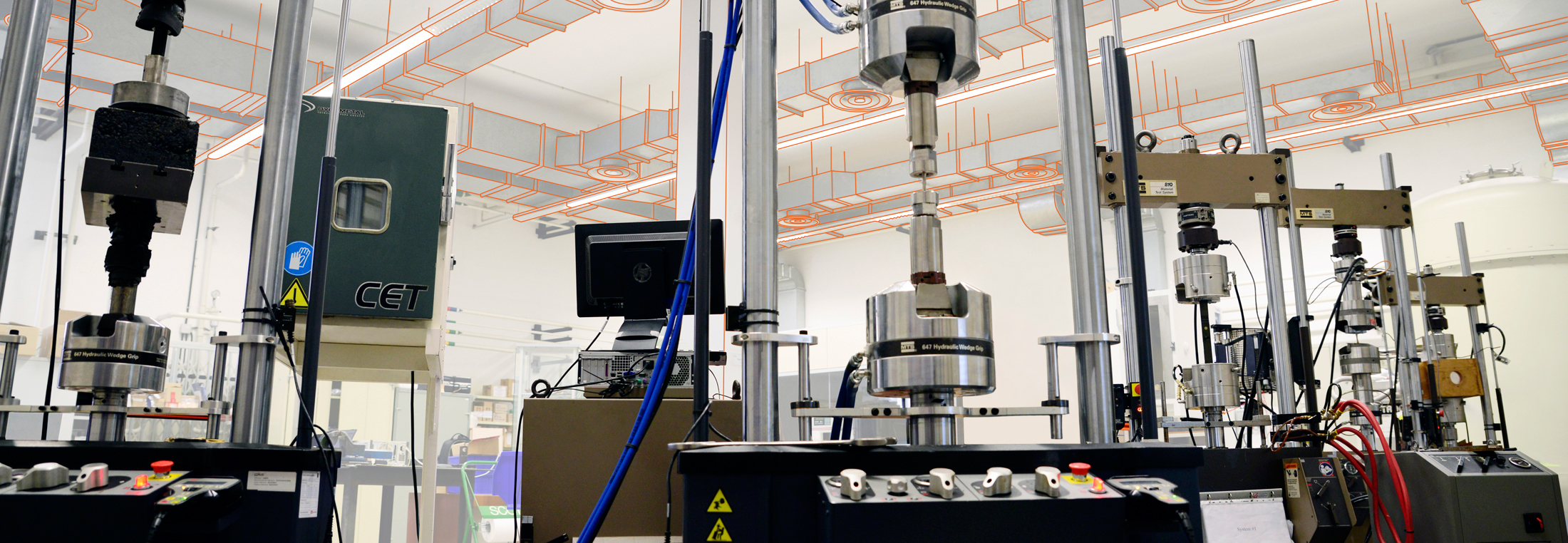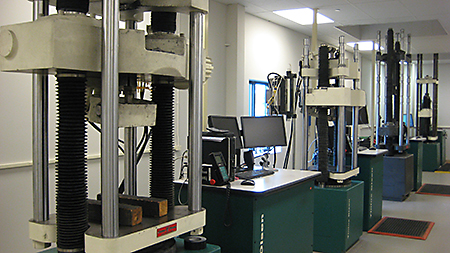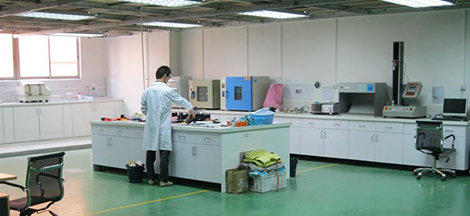Comprehensive Material Testing Lab: Your Partner for Accurate Quality Assurance
Wiki Article
Improvements in Material Testing for Unprecedented Efficiency
In today's swiftly developing world, where technical advancements are improving sectors and pressing the borders of what was when regarded impossible, the demand for products that can stand up to unmatched problems and supply extraordinary efficiency has ended up being progressively critical. As designers and researchers make every effort to create next-generation products, the capacity to properly test and review their residential or commercial properties has never been even more vital. This brings us to the appealing realm of improvements in material testing, where cutting-edge strategies and innovative methods are transforming the means we maximize and recognize product performance. From non-destructive testing methods to the combination of expert system, the possibilities appear unlimited. So, let us start this trip of exploration, as we discover the remarkable advancements in material testing and their possible to form the future of numerous industries.Non-Destructive Examining Strategies
Non-destructive testing methods are necessary for evaluating the integrity and dependability of products without causing any type of damages. These techniques play an essential function in various markets, including aerospace, automotive, building and construction, and manufacturing. By using non-destructive screening approaches, designers can examine the residential properties and attributes of materials, ensuring that they satisfy the called for requirements and requirements.
One more widely utilized method is magnetic bit testing (MT), which is mainly utilized for identifying surface area and near-surface flaws in ferromagnetic materials. By applying an electromagnetic field to the product and afterwards introducing magnetic bits, any flaws present can be conveniently determined. MT is particularly effective for identifying cracks, lack of combination, and other surface abnormalities.
Advanced Products Characterization Approaches
Advanced materials characterization techniques are crucial devices for reviewing the residential or commercial properties and performance of materials in various markets. These approaches include the use of innovative methods to recognize the microstructure and evaluate, composition, and behavior of materials at the atomic and molecular degrees. By using sophisticated characterization engineers, approaches and researchers can acquire valuable understandings right into the architectural stability, mechanical buildings, thermal security, and chemical reactivity of products.One extensively utilized approach is scanning electron microscopy (SEM), which gives high-resolution pictures of a product's surface. SEM permits for the assessment of the product's morphology, topography, and important make-up. Another important method is X-ray diffraction (XRD), which gives information concerning the crystal structure and phase structure of materials. XRD is specifically useful for evaluating the plan of atoms in crystalline materials.
Additionally, transmission electron microscopy (TEM) enables researchers to observe the interior framework of products with atomic resolution. TEM can exposing details such as grain misplacements, issues, and limits, supplying vital info regarding a product's mechanical residential properties - material testing lab. Additionally, spectroscopic techniques like Fourier-transform infrared spectroscopy (FTIR) and Raman spectroscopy can be made use of to evaluate the chemical structure, molecular structure, and vibrational modes of products
High-Temperature and Extreme Atmosphere Screening
In order to evaluate the performance of products in severe and high-temperature atmospheres, extensive screening techniques are needed. These screening methods are created to mimic the problems that products might run into in real-life applications, such as aerospace, automotive, and energy sectors. Severe and high-temperature environment screening aims to examine the actions of materials under severe warmth, stress, and various other difficult conditions.One generally made use of strategy for high-temperature screening is thermal analysis. This technique involves subjecting the product to differing temperatures while determining its thermal buildings, such as thermal development, heat capability, and thermal conductivity. By analyzing these residential or commercial properties, researchers can establish just how the material will act under various temperature conditions, allowing them to choose one of the most appropriate products for specific applications.
One more essential facet of severe and high-temperature environment screening is mechanical testing. This includes subjecting the product to mechanical anxiety at elevated temperatures, replicating the conditions it may experience in real-world applications. Mechanical testing helps review the product's ductility, stamina, and resistance to contortion and failing under severe and high-temperature conditions.
Furthermore, environmental testing is critical to analyze the material's efficiency in extreme problems, such as corrosive settings or exposure to extreme weather conditions. This testing entails subjecting the material to different environmental aspects, such as humidity, salt spray, and UV radiation, to evaluate its longevity and resistance to rust and destruction.

Simulation and Modeling for Material Performance
Simulation and modeling play an essential role in understanding and predicting the performance of materials in different applications. With improvements in computational capacities, designers and researchers can now design the actions and simulate of products under various problems, offering important understandings right into their efficiency and assisting in the development of brand-new products with improved properties.With simulation and modeling, researchers can research the microscopic and macroscopic actions of products, including their mechanical, thermal, and electric buildings. This enables them to anticipate how materials will this website behave under various tons, temperatures, and ecological problems, without the requirement for lengthy and pricey speculative screening.
Simulation and modeling techniques additionally allow scientists to maximize product designs and identify prospective weaknesses or failure factors. By studying the material's response to different forces and stimuli, designers can make informed choices regarding product choice and layout modifications to boost efficiency and durability.
Additionally, simulation and modeling can aid in the growth of materials for specific applications. In the aerospace industry, scientists can replicate the habits of materials under extreme temperatures and stress to develop light-weight yet strong products for airplane frameworks. In the medical area, simulation strategies can be made use of to research the interactions in between materials and organic cells, resulting in the growth of biocompatible products for implants or drug delivery systems
Assimilation of Expert System in Material Screening
The unification of Artificial Knowledge (AI) right into material screening has actually reinvented the area, allowing researchers to attain unprecedented precision and efficiency in reviewing product performance. AI algorithms can process and assess big amounts of data, identifying patterns and correlations that may not be promptly apparent to human scientists. This enables even more comprehensive and precise testing, causing a deeper understanding of material habits.One application of AI in material testing remains in the development of predictive designs. By training AI algorithms on huge datasets of product buildings and efficiency, scientists can produce designs that click here for more info can properly predict the habits of new materials under different conditions. This can considerably speed up the product growth process, as it allows researchers to display and prioritize products with preferred buildings.
Along with predictive modeling, AI can likewise be made use of to maximize screening procedures. By assessing historical testing information, AI formulas can recognize the most informative and efficient examinations to execute, decreasing the time and sources required for product evaluation.
Furthermore, AI can aid in the recognition of anomalies or issues in products. By comparing test outcomes versus anticipated results, AI algorithms can find inconsistencies and alert scientists to potential concerns. This can aid boost quality control processes and guarantee the usage of materials that fulfill the required specifications.
Final Thought

By evaluating these residential or commercial properties, scientists can figure out just how the product will behave under different temperature conditions, enabling them to select the most ideal products for details applications.
The unification of Artificial Knowledge (AI) into material screening has actually transformed moved here the area, allowing researchers to accomplish extraordinary precision and effectiveness in reviewing product efficiency.In verdict, advancements in product testing strategies, characterization methods, severe and high-temperature setting screening, and the integration of fabricated knowledge have substantially contributed to the growth of unprecedented performance in materials. These developments have actually enabled for the recognition of material residential or commercial properties and actions, allowing the design and optimization of materials for numerous applications. material testing lab. With further research and technical innovations, material testing will certainly proceed to play a crucial function in pressing the boundaries of material efficiency
Report this wiki page